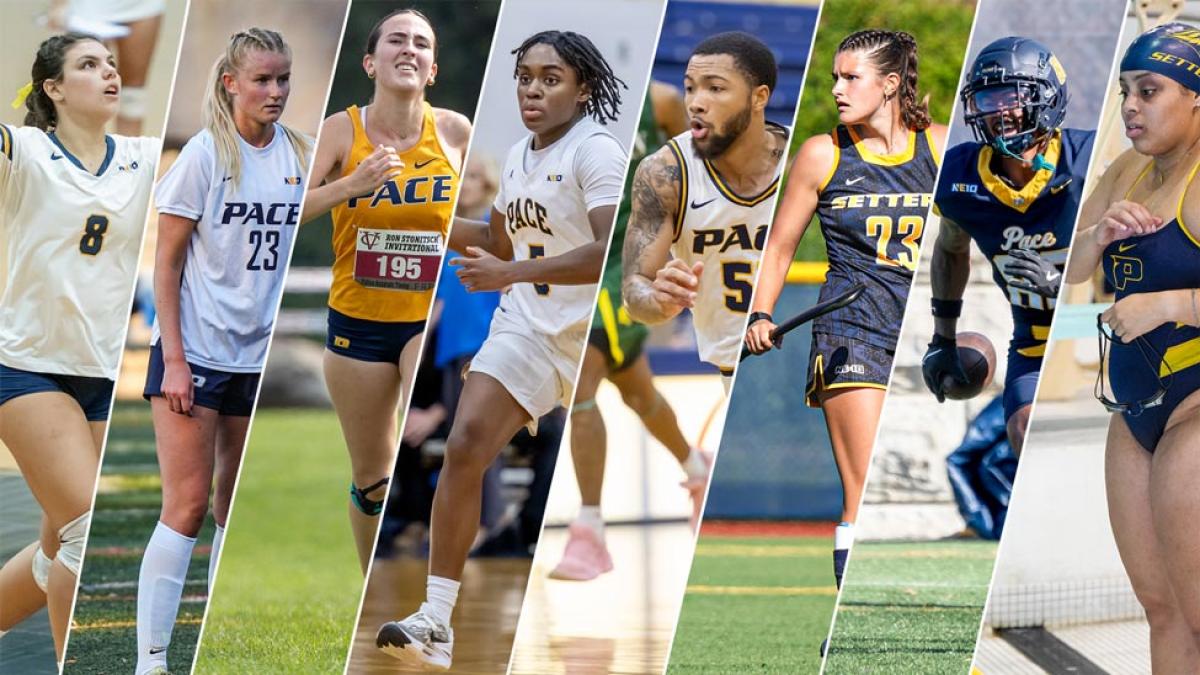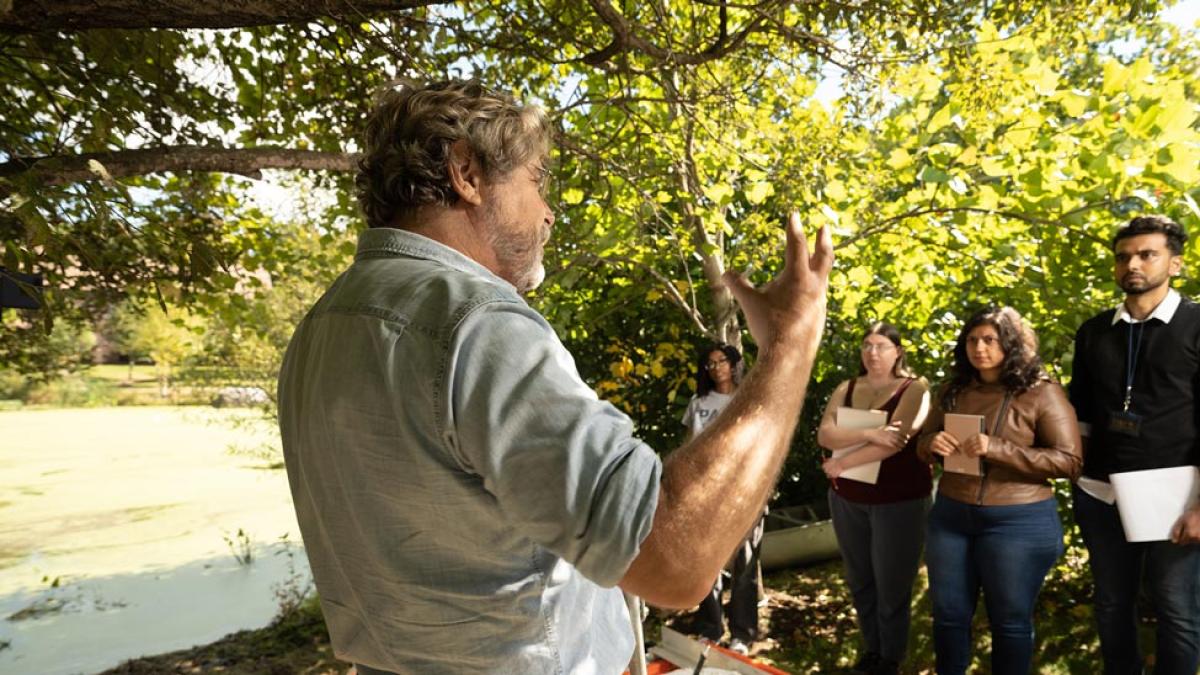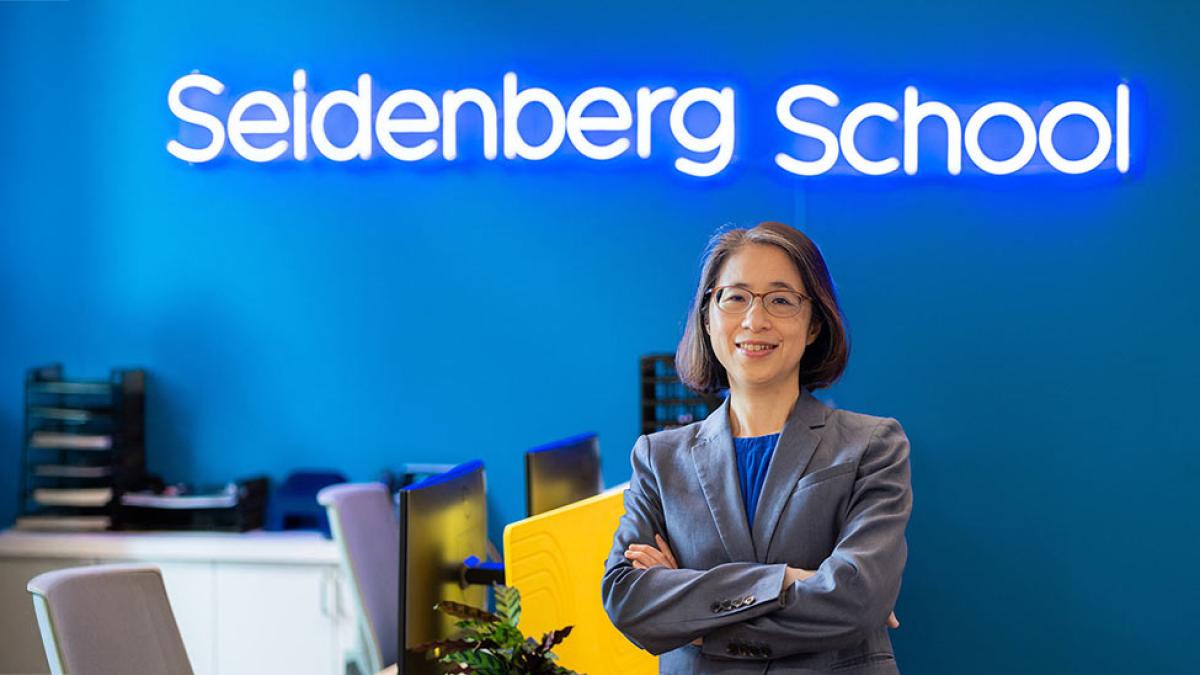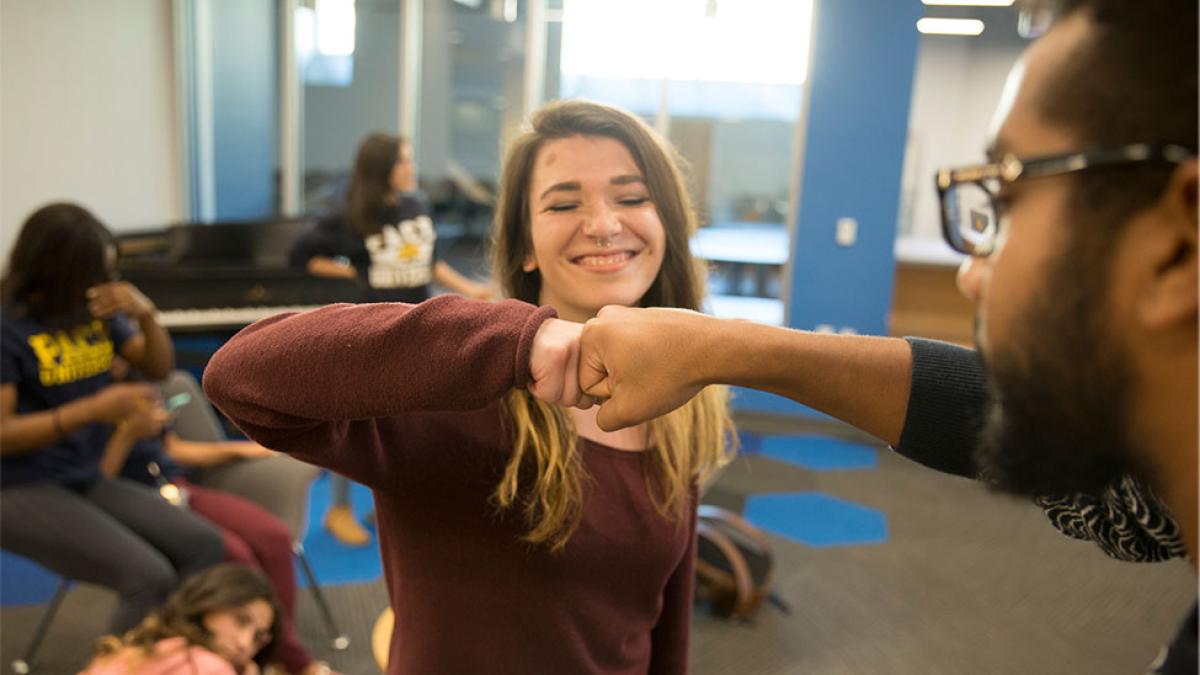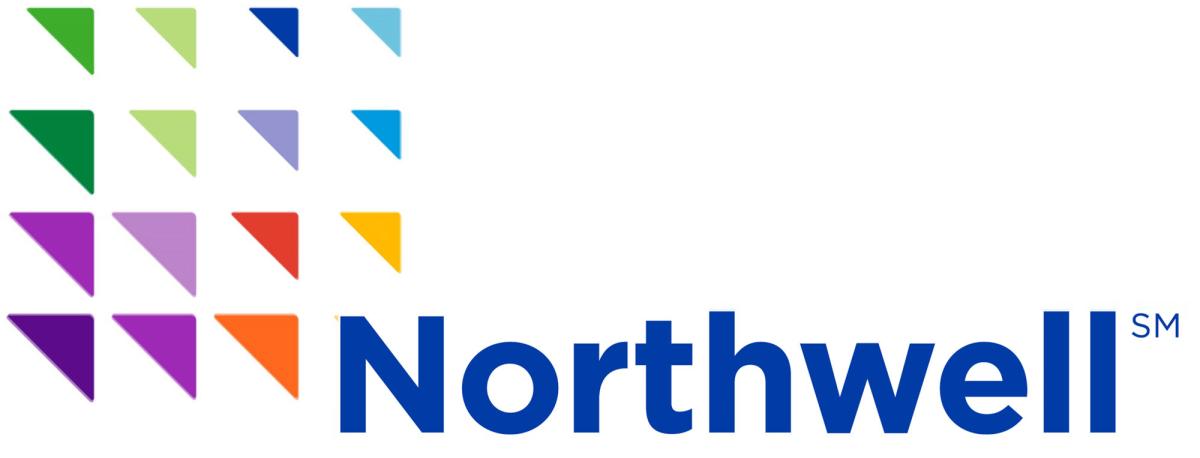
Trump Avoids Prison Sentence, Fines In Felony Hush-Money Case
Elisabeth Haub School of Law Professor David Dorfman speaks to CBC about President-elect Donald Trump escaping legal punishment beyond a criminal record for his felony crimes after being handed an alternative sentence called an unconditional discharge.
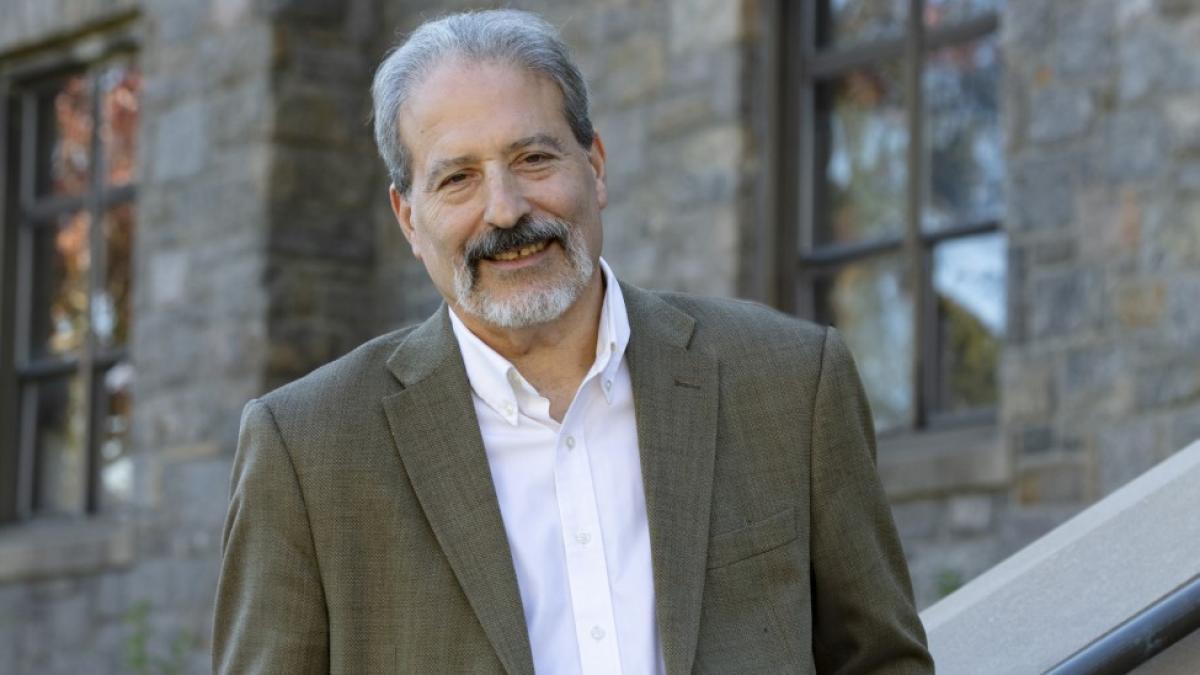
Selwin Days DID NOT Murder Archie Harris & Betty Ramcharan in 1996. DA Rocah Vacates Conviction with Search for New Suspects
Professor Gershman speaks to Yonkers Times about former Westchester District Attorney Mimi Rocah’s decision, in her final days in office, to vacate the conviction of Selwyn Days. Days spent 16 years in prison for a 1996 double homicide in Eastchester, but Rocah’s Conviction Integrity Unit identified two other suspects believed to be responsible for the crimes.
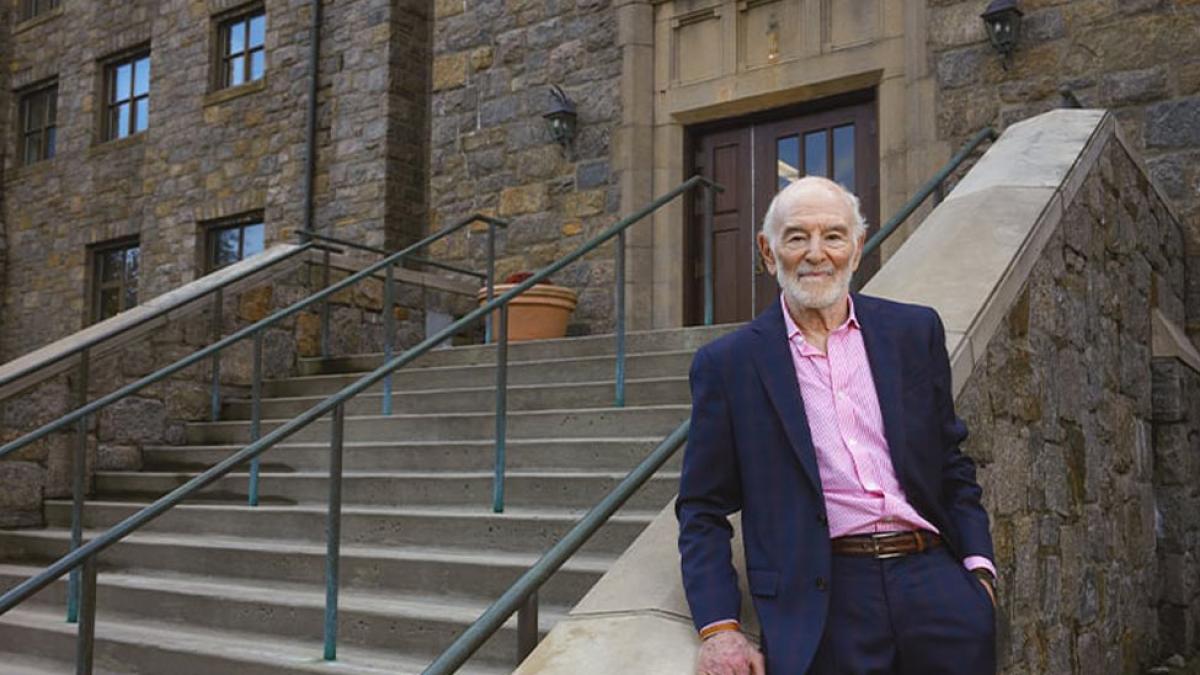
Trump And Korea's Political Uncertainties
Professor Seong Jae Min writes a piece in The Korea Times addressing Trump and Korea's political uncertainties.
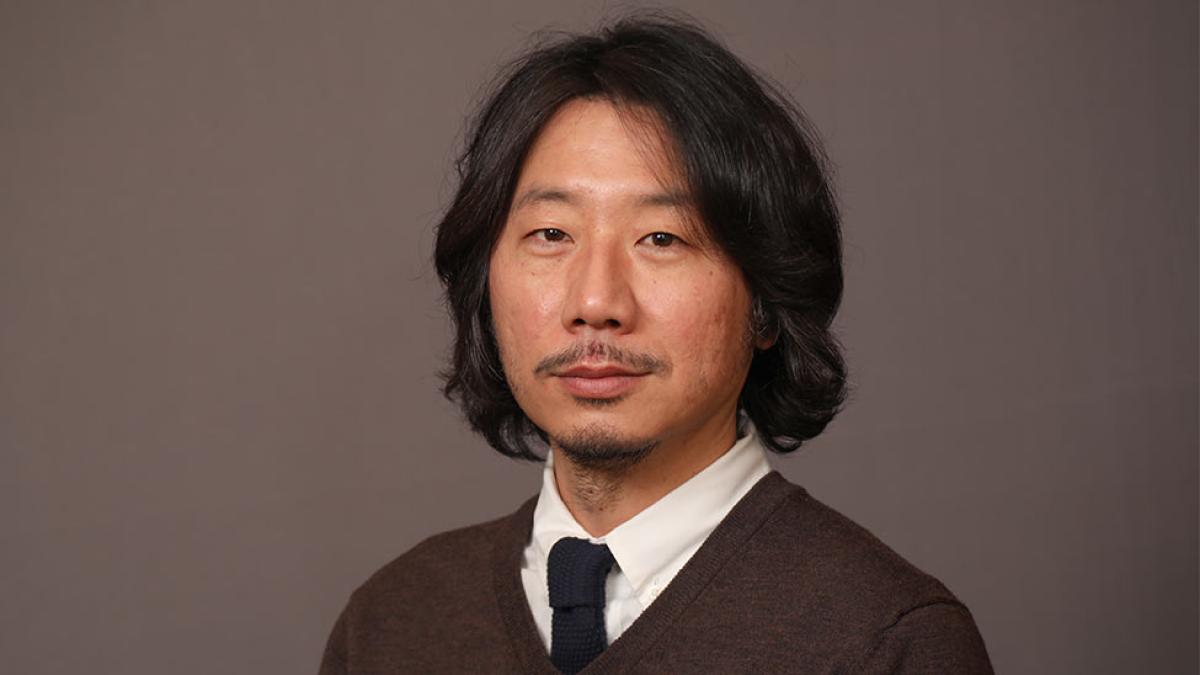
Cash-Poor Americans Paid Tens Of Billions In Junk Fees To Borrow Money Last Year
The 2025 Cash Poor Report, created with input from Opinium and The Aspen Institute’s Financial Security Program and concluded by Lubin Professor Tamir Harosh, revealed that Cash Poor Americans paid over $39 billion in fees beyond the advertised APR when seeking short-term capital. This represents a staggering 34% increase from 2023, Quartz reports.

Free One Week Camp for High School Students Interested in Cybersecurity
The Hudson Independent highlights Pace University’s free Camp CryptoBot, a dynamic, mission-driven cybersecurity camp for high school students funded by the National Security Agency.
Men's Soccer: Kicking off at Pace in 2025
Thanks to a generous gift from Kenda Sports Group, Pace Athletics is proud to announce that after a 35-year hiatus, men’s soccer will return to campus.
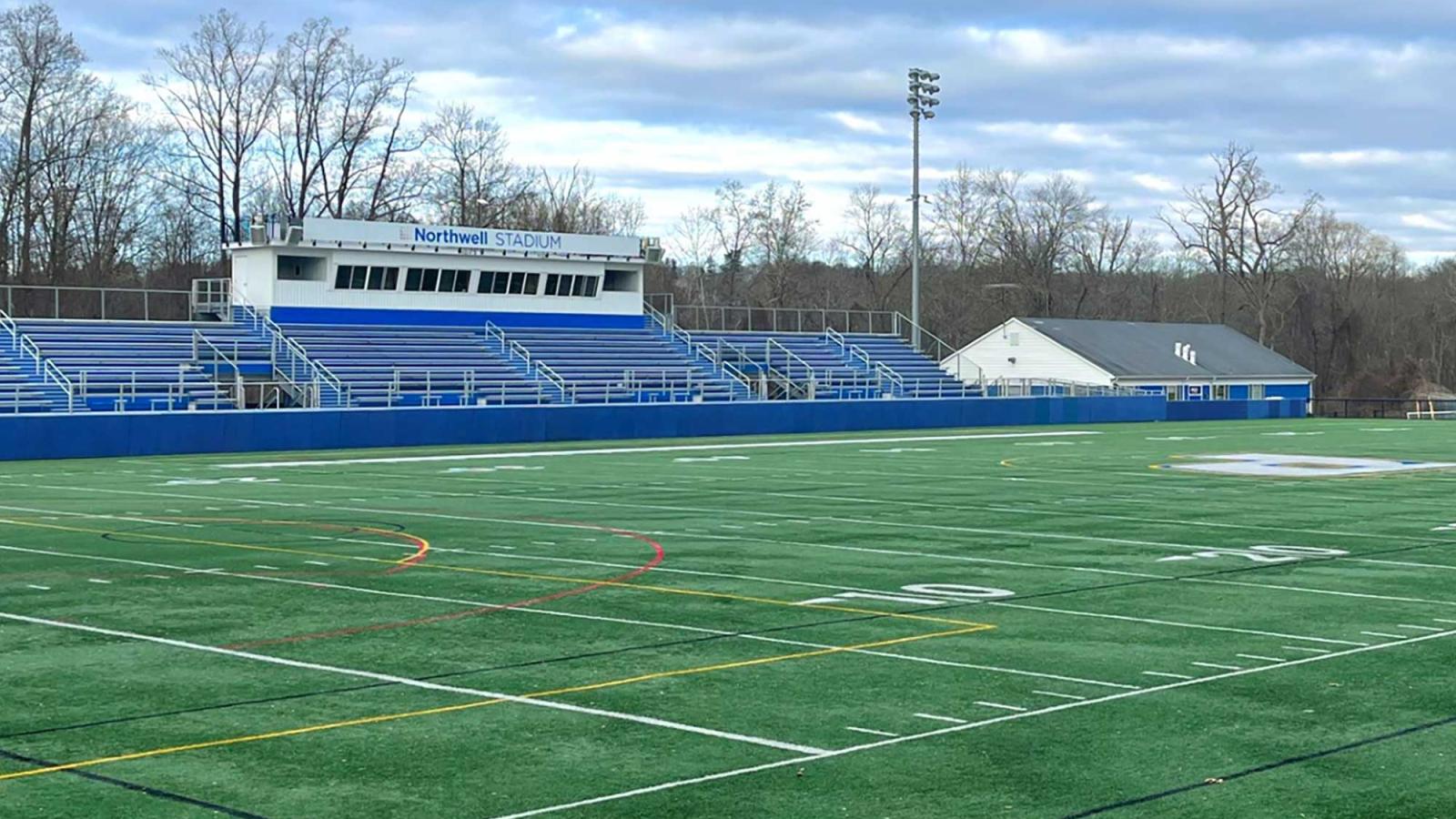
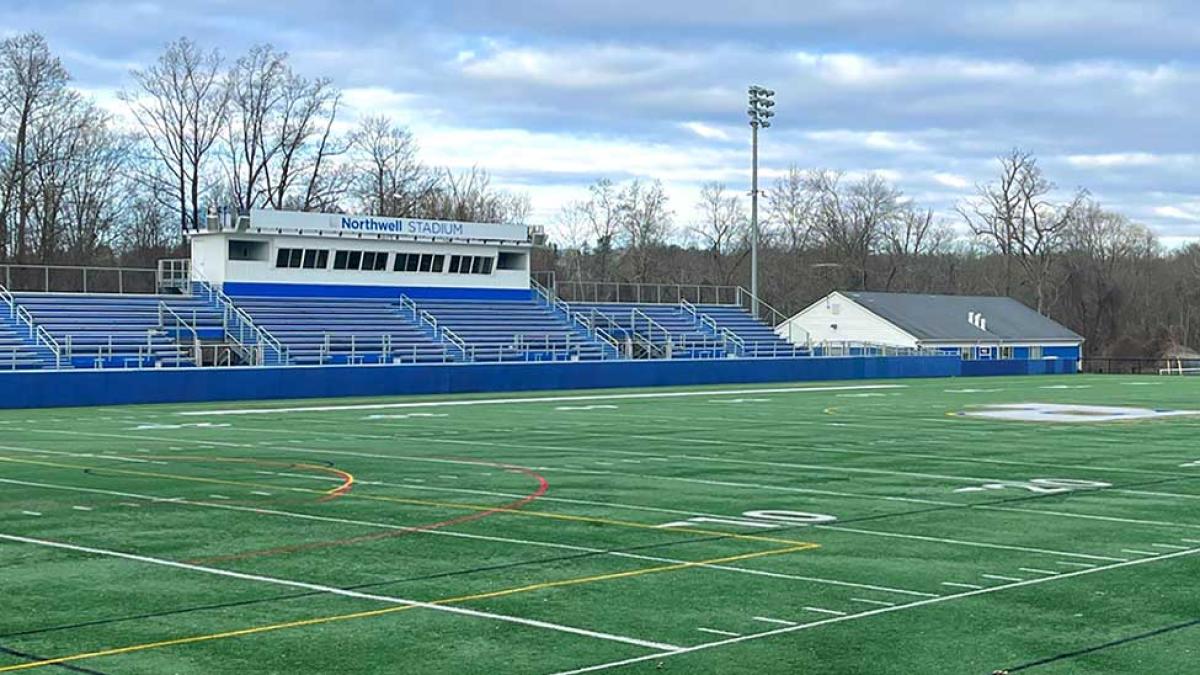
Collegiate soccer in the Northeast just got a lot more exciting.
“We are thrilled to bring men’s soccer back to Pleasantville and thank Kenda Sports Group for their visionary gift and support to lead this initiative,” says Pace Athletic Director Mark Brown.

After a 35-year hiatus, men’s soccer is back at Pace. The beautiful game will return to Pleasantville thanks in large part to the Kenda Sports group, who will be contributing $500,000 over a 5-year period to accelerate the men’s soccer program’s concept from vision and ideas into reality, aiming to grow the sport of soccer in the Hudson Valley and expand on the University's NCAA Division II sports sponsorship.
The team will be coached by Edward Evans, who has served on the staff of the women's soccer team since 2013, and became head coach in 2024.
“A lot of local youth and high school coaches are super excited about the re-addition of men’s soccer at Pace University,” said Evans. “We have full 18-game schedule, and our roster will give a local and regional feel to it.. We’re really looking forward to next Fall.”
Once regarded as a sport for the rest of the world, soccer continues to explode in popularity in the US, with its growth being driven by a younger, more diverse audience than the other major sports. Major League Soccer, which was not even in existence at the time of the last Pace men’s soccer season, continues to smash attendance records and has built a considerable roster of talent—most notably, international superstar Lionel Messi. With men’s soccer back in the fold, Pace is strategically positioned to capitalize on the positive momentum surrounding the sport in general.
Although Pace’s men’s soccer program has been dormant, its influence on American soccer has not been. Take the example of Mike Jacobs ‘92; an alumnus of the program, Jacobs has risen through the ranks of the soccer world following his playing career as a goalkeeper and is now the general manager of Major League Soccer’s Nashville SC.
“My experience at Pace helped formulate so much of who I am today,“ says Jacobs. “The idea that other kids will have the same experience that I did as a student, I'm just really excited about the fact that there will be men’s soccer at Pace again.”
“My experience at Pace helped formulate so much of who I am today. The idea that other kids will have the same experience that I did as a student, I'm just really excited about the fact that there will be men’s soccer at Pace again.”
The entire Pace Community shares Jacobs’ enthusiasm. On the Pleasantville Campus, the addition of men’s soccer will also serve to increase enrollment, while simultaneously enhancing the vibrancy of the overall student experience.
“The addition of men’s soccer will allow us to increase male enrollment by 20–25 students and create an additional 8–10 campus life opportunities with home games for students, faculty, staff, alumni, and the surrounding Pleasantville community, all while better meeting the needs of our current students,” notes Brown.
As Jacobs explains, the new members of the Pace men’s soccer squad—which will kick off its “re-inaugural” season in 2025—will undoubtedly raise the profile of the University both on and off the field.
“As a student-athlete, the skills I gained in time management—having to balance practice, working out, classes—there's a reason why so many companies look to hire former collegiate student-athletes,” adds Jacobs. “ They've mastered time management, can work in small and large groups, and are also very goal oriented.”
To keep current on developments–including announcements on recruitment, coaching staff, and more–be sure to stay up to date with Pace Athletics by visiting their website and following @PaceAthletics. Until the fall, the bright lights at Northwell Stadium eagerly await.
More from Pace Magazine
From individual accolades, first ever team wins, and the 2024 Pace Athletics Hall of Fame, the opening months of the school year have been filled with great success on and off respective playing fields.
At Pace University, we're driven by renewal, growth, and the pursuit of excellence. As we step into this exciting chapter, we reflect on the incredible progress we've made as a community of leaders, changemakers, and innovators.
At Pace, innovation and impact go hand in hand. This past fall, our faculty and staff secured transformative awards and impressive grants that spotlight Pace’s leadership in environmental justice, experiential learning, cybersecurity, and student well-being.
Improving Teacher Training Through AI
Through a grant from the New York State Department of Education, SOE's Jennifer Pankowski and Seidenberg's Tom Schmidt are employing artificial intelligence solutions to potentially revolutionize the teacher training experience.
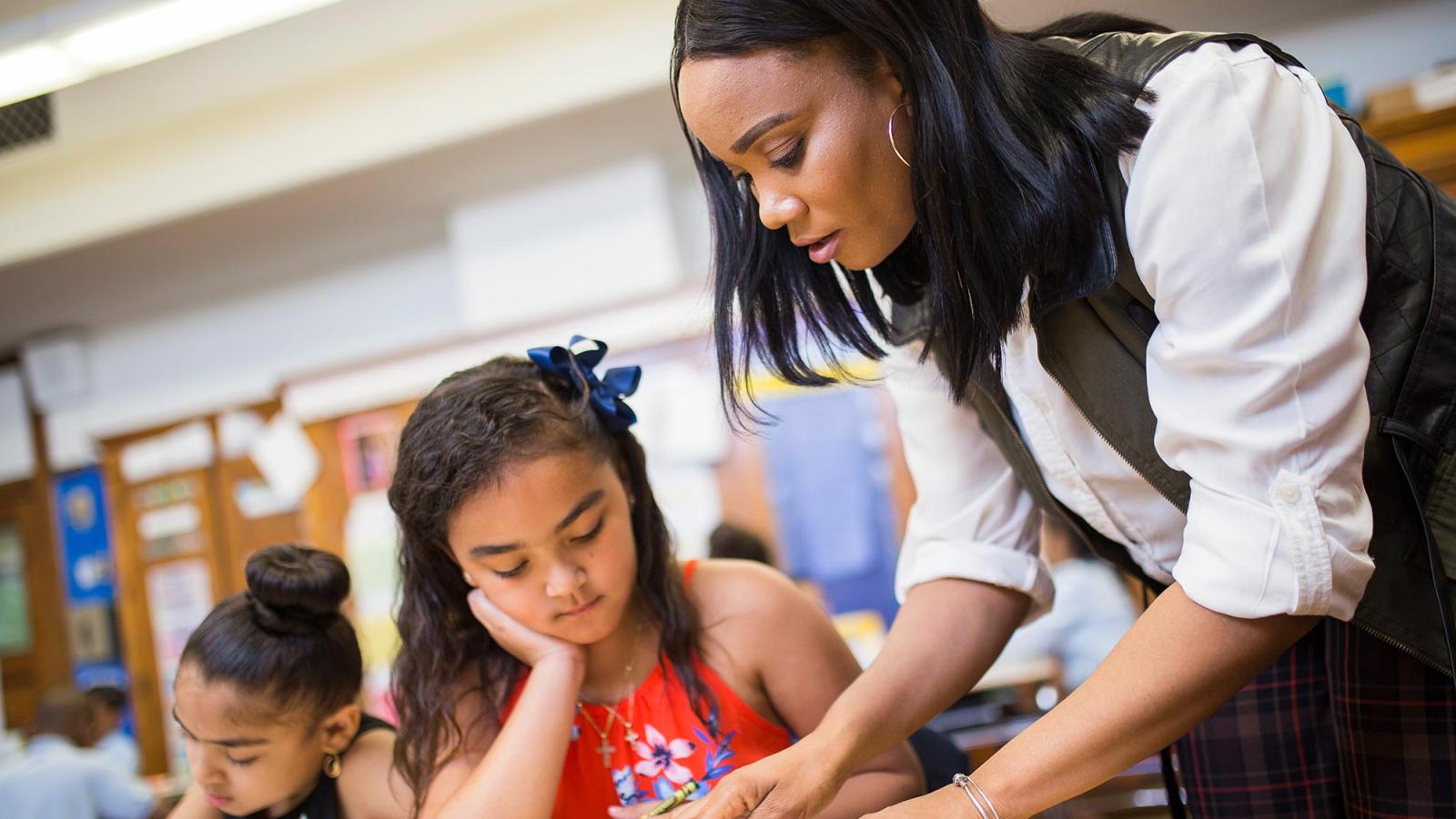
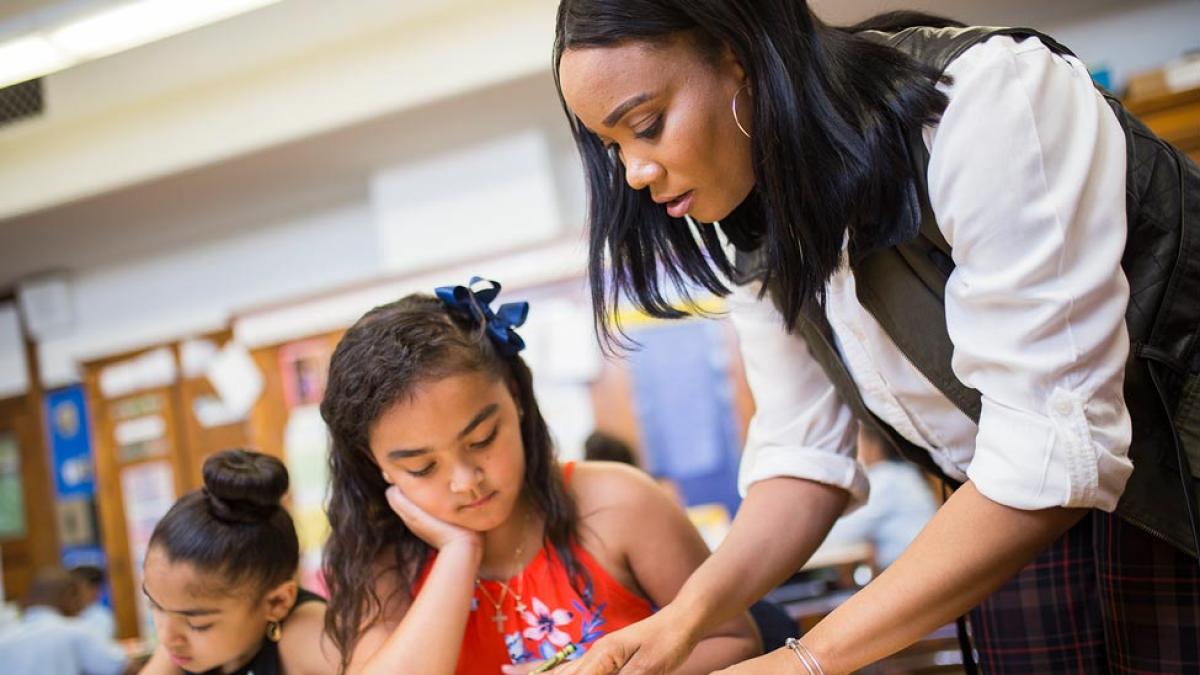
School of Education Professor Jennifer Pankowski, EdD, specializes in working with neurodivergent students, embracing the role of technology in supporting both students and teachers in the classroom. Seidenberg Clinical Assistant Professor Tom Schmidt, DSc, has devoted his career thinking about the interplay between education and information systems, and how technology can cultivate a better learning experience.
Working together on a potentially groundbreaking research project was destined to happen.
“I connected with Jennifer, and I’ve so much enjoyed working her that it feels like we’ve always been in touch,” says Schmidt.
Both professors Pankowski and Schmidt have a strong interest in empowering neurodivergent students to reach their potential in the classroom. During the summer of 2024, Professor Schmidt continued his longstanding mentorship within this domain, serving as the faculty research advisor for then-Seidenberg student Ashley Peleg ’24; who based on her own experiences, sought to improve traditional teaching methods using XR technologies (virtual reality and augmented reality), so that teachers can better accommodate diverse learning styles in the classroom.
Fortuitously, this work aligned with a grant from the New York State Department of Education that Pankowski recently received. Entitled Enhancing Supports for Post Secondary Students with Disabilities, the grant focuses primarily on developing ways to help neurodivergent students have a better classroom learning experience—while additionally assessing if these innovations will improve the learning experience for all students.
As Schmidt elaborates, “By benefitting neurodivergent students, can we also further benefit everybody by the way we teach? This aligns very much with the research I’ve published over the past eight years, the science of successful learning. How do we adapt our teaching to make sure everyone feels included in the lesson? Can embracing (neuro)diversity make a better university for everyone?”
How do we adapt our teaching to make sure everyone feels included in the lesson? Can embracing (neuro)diversity make a better university for everyone?”
For many years, Pankowski has been employing avatars in the classroom to simulate complex situations that teachers may encounter in the classroom. Ashley’s research provided a foundation from which to further explore this area.
“Tom knew I worked with neurodivergent students and knew I worked with avatars. He reached out,” she says. “I had still been working with the avatar technology software I’d long been using, but through another platform, Edstutia, there was a lot more opportunity for innovation. He had me do a demo. That got us into this wormhole of—how do we really expand this thing?”
For Pankowski, a major focus of her practice is training her students to handle delicate and complex interpersonal situations with grace, poise, and expertise. Traditionally, this has been taught through case studies and role play simulations—both of which Pankowski note are not ideal, since case studies lack an experiential component, and role play can be tinged with implicit bias given the participants are already familiar with one another.
With Ashley’s research and the Edstutia platform as a launching point, Pankowski thought—what if, using this new technology, these simulations could be automated with artificial intelligence?
Thus, an idea was born. With direction from both Schmidt and Dan Buffone of Pace’s Learning Commons—who is also employing this technology—a few students are now helping to program the AI of Edstutia to automate a phone call simulation. The premise? A teacher is required to deliver not-so-good-news about a student…and must get the parent to come in for a parent-teacher conference before the parent hangs up the phone.
“We’re hoping by the start of the spring semester, our initial AI phone call will be ready to go,” notes Pankowski. “The goal is to get the parent (simulated by AI) to come in for a parent-teacher conference and not hang up the phone on you. If the AI-simulated parent hangs up the phone, the SOE student playing the role of the teacher will get a prompt to reach out to their professor, and then they’ll do the phone call with me.”
For Pankowski, this automation accomplishes several objectives simultaneously. For one, it significantly cuts down on the administrative load for faculty members tasked with creating simulations and role play scenarios, enabling her to focus on the actual skill-building and development of her students.
“I have a class of 30 education students. To really work one-on-one with students, or to have time to debrief in class, having an AI component that automates much of the process is hugely helpful. That frees up my availability, and now we’re able to bring the report into the classroom and discuss.”
To really work one-on-one with students, or to have time to debrief in class, having an AI component that automates much of the process is hugely helpful. That frees up my availability, and now we’re able to bring the report into the classroom and discuss.
Additionally, having a programmed AI bot removes some of the potential bias from the equation. It also offers the potential to significantly improve the learning experience for neurodivergent students, as it provides impartial analysis in a way that a standard role play simulation cannot.
“When we use this technology, we have a unique opportunity to be a fly on the wall—to give the feedback you’ll never hear from a parent. This allows us to discuss something like hey, this pinged on the AI as something you shouldn’t say, so let’s have a conversation; what were you trying to convey? And then we can have a redo.”
The redo component, Pankowski explains, is central to the value-add of this new technology. It provides Pace students ways to continuously develop real-world skills within the classroom setting—similar to the way a pilot in flight school builds their skills repeated simulations.
“The biggest benefit is that it’s giving that experiential component—the real-world application without the potential downfall of a real-world application,” explains Pankowski. “In the medical field, if you give someone bad advice, you don’t get a redo. In education, if you have a bad interaction with a parent, you don’t get a redo. What this does for students is allows them, like in gaming, to restart and get a do-over.”
In the medical field, if you give someone bad advice, you don’t get a redo. In education, if you have a bad interaction with a parent, you don’t get a redo. What this does for students is allows them, like in gaming, to restart and get a do-over.
As Pankowski and Schmidt look to further implement and expand this work, they hope to potentially be able to apply it other fields in which complex interpersonal interactions take place, such as within medicine or psychology.
As Pace is a leader in this field—Pankowski has noted that educators from Stanford, Michigan, Vanderbilt, Miami-Dade Schools, and as far as Israel have reached out to discuss this work—the potential for continued expansion and success can not only elevate the impactful work of our faculty and students, but make a difference in the lives of all students.
“No one is really looking at being a practitioner in this regard—we think about it for astronauts, racecar drivers, pilots. We don’t think about this for doctors, educators, psychologists, but they can benefit from this repeated simulation. That’s what we’re hoping to give, this Pace difference.”
More from Pace Magazine
At Pace University, learning from the best isn't just a promise—it's a reality. Meet the seven extraordinary professionals-turned-professors shaping the next generation of leaders. From theater to law, nursing to AI, these educators bring world-class experience and passion to every lecture.
At Pace, innovation and impact go hand in hand. This past fall, our faculty and staff secured transformative awards and impressive grants that spotlight Pace’s leadership in environmental justice, experiential learning, cybersecurity, and student well-being.
The days of John Gotti and The Godfather are long behind us, but organized crime has continued to evolve. A Pace student teams up with two faculty members to investigate.
The Partnership Creating World-Class Environmental Leaders
For nearly 25 years, Pace University's Elisabeth Haub School of Law has partnered with Yale University to create one of the most unique and impactful joint degree programs in the world.
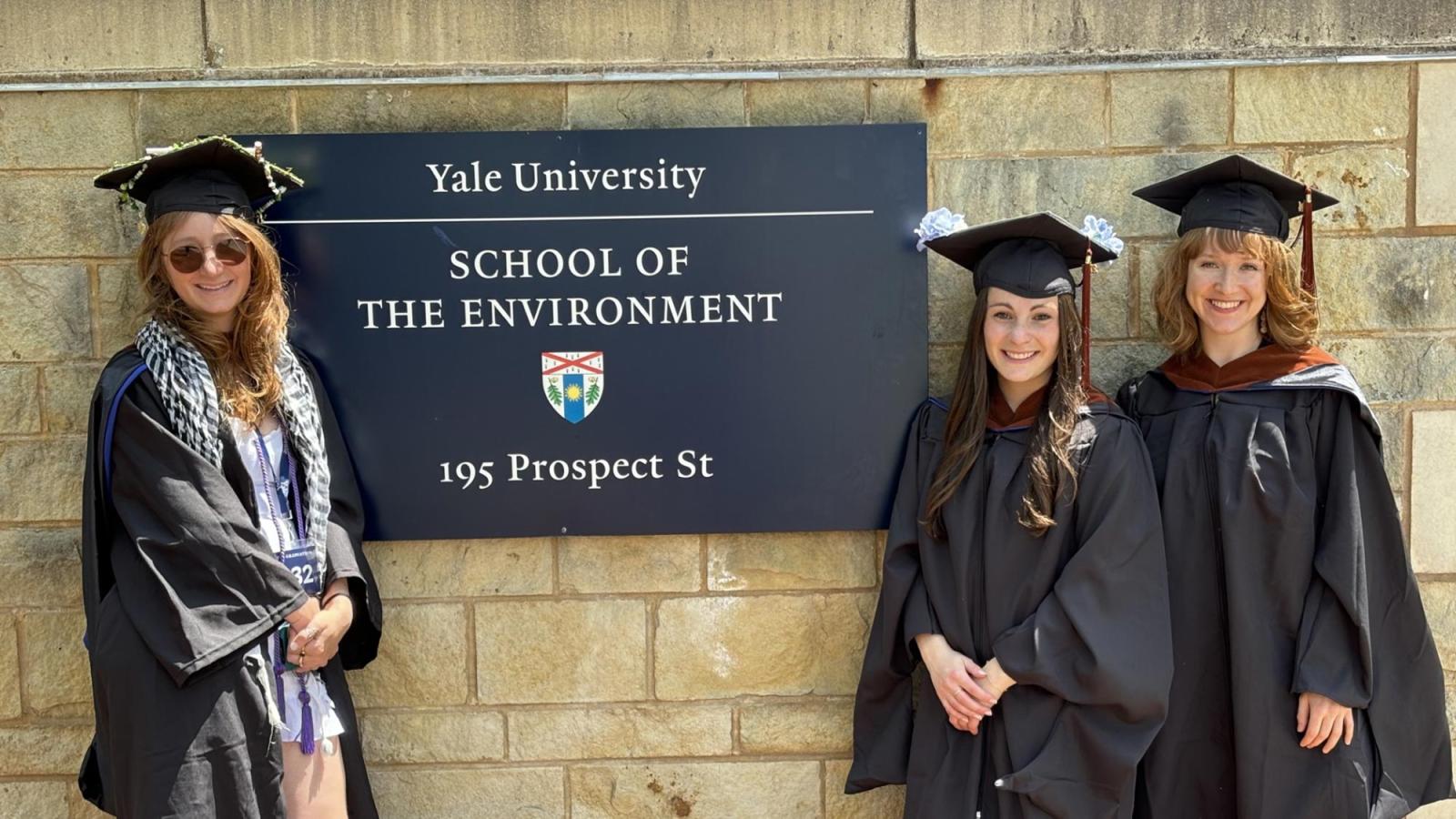
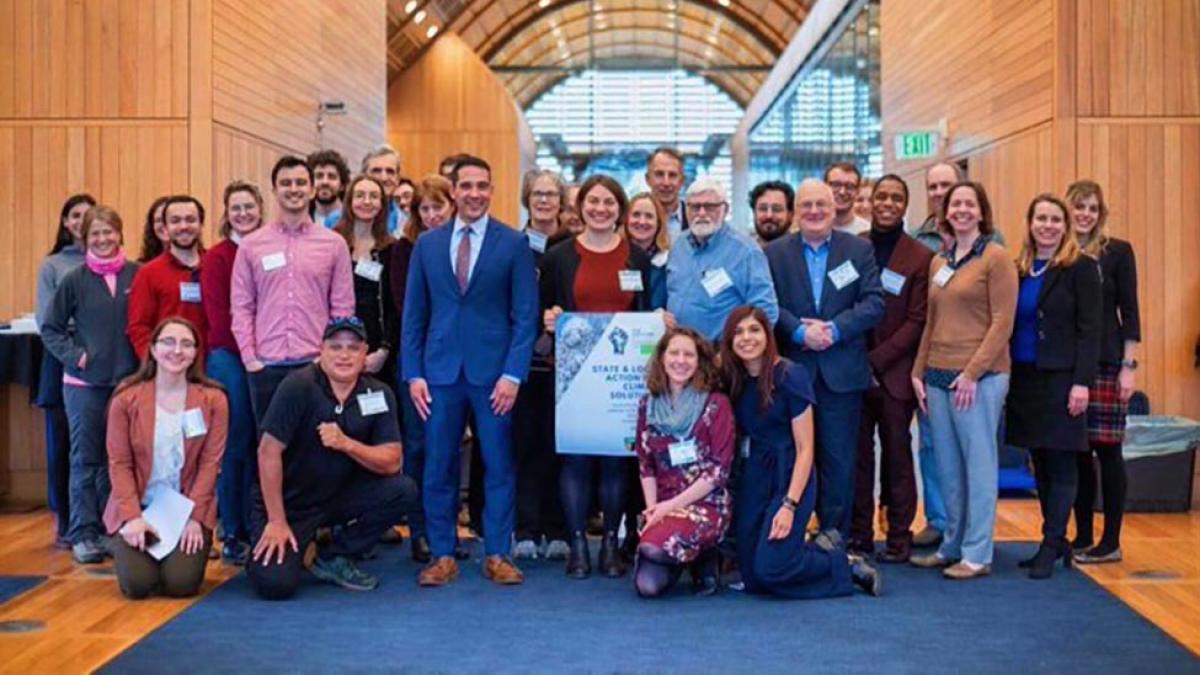
A Pace education has never been confined to just the classroom, or even the physical borders of campus.
From our long-standing relationships with the Big Four accounting firms, to levergaging worldwide connections in tech through the Design Factory Global Network, to a renewed focus on humanities-based learning opportunities in our own backyard, our ever-expanding network of partnerships ensures that when it comes to real life learning, Pace truly walks the walk.
If you look closely, you’ll find that these sorts of symbiotic partnerships are everywhere. Take, for example, the Elisabeth Haub School of Law’s relationship with Yale University. For nearly 25 years, law students at Pace have had the option to pursue a JD from Haub Law and a Master’s in Environmental Management (MEM) from the Yale School of the Environment. This unique relationship enables Haub Law students–who are already earning a degree at the number one environmental law school in the country–to pair their JD with an interdisciplinary master’s degree at one of the most prestigious universities in the world.
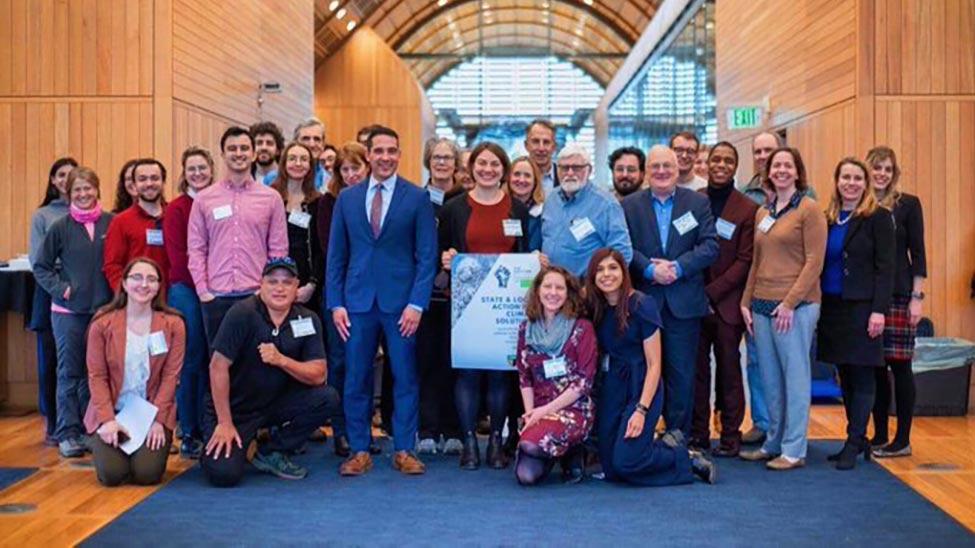
For good reason, this partnership is more popular than ever, with a record number of applicants and admitted students over the last few years. To further bolster the program, three new joint degree options were recently added, including a JD/Master of Environmental Science (MESc), JD/Master of Forestry (MF), and a JD/Master of Forest Science (MFS).
“More and more Pace students have participated every year, and we’re at the pinnacle of this program in terms of the quality, breadth, and quantity of students who are participating. We’ve grown to become the main law school involved in the program in terms of number of students.”
These are the words of Haub Law Professor Josh Galperin, who has been involved with the program for roughly two decades–first as a student, then as a lecturer at Yale, and now currently, as the program director at Pace’s Haub Law. During this time, Galperin has witnessed the program’s impressive growth and ability to meet the evolving goals of students; particularly the way in which the program is able to empower students to meet the ever-important challenges of the climate crisis.
As Galperin emphasizes, the program is far from just a glossy item to feature on a resume. For anyone interested in pursuing a career in environmental law or as an environmental professional, the program’s interdisciplinary approach offers incredible value. Important skills learned in law school such as analyzing problems in a careful and precise way, thinking deeply about both sides of an argument, and learning how to read cases and law and make legal arguments are all incredible assets, but often not enough for aspiring interdisciplinary environmental professionals. Rather, these skills are best utilized when paired with deep knowledge about the environmental concern in question.
“Environmental law isn’t plain old lawyering,” emphasizes Galperin. “It involves negotiation, policymaking, public outreach, some awareness at least—if not expertise in—scientific issues and concerns. In many respects, this is what makes the program truly valuable.”
“Environmental law isn’t plain old lawyering. It involves negotiation, policymaking, public outreach, some awareness at least—if not expertise in—scientific issues and concerns. In many respects, this is what makes the program truly valuable.”
Allison Sloto ’16, now an associate at international law firm Milbank LLP, echoes this sentiment. A large part of her current practice entails representing lenders seeking to understand whether the large-scale renewable energy projects they are considering are fully compliant with environmental laws–which in turn requires Sloto to review and interpret the results of complex consultant reports which demand in-depth knowledge of the environmental issues at hand. She credits her experience in the program as instrumental in helping her build the skill set she now employs routinely.
“As an environmental lawyer it is critical to be comfortable with science, as an integral aspect of our job is working hand-in-hand with environmental consultants and interpreting environmental reports for material legal conclusions,” emphasizes Sloto. “My time at Yale allowed me to take classes in science, policy, and business, which exercise the mind in different ways. Having the adaptability to understand a scientific paper, or engage in expansive brainstorming with a business group (without immediately engaging my lawyer-brain to critique proposed ideas), has helped me in innumerable ways throughout my career.”
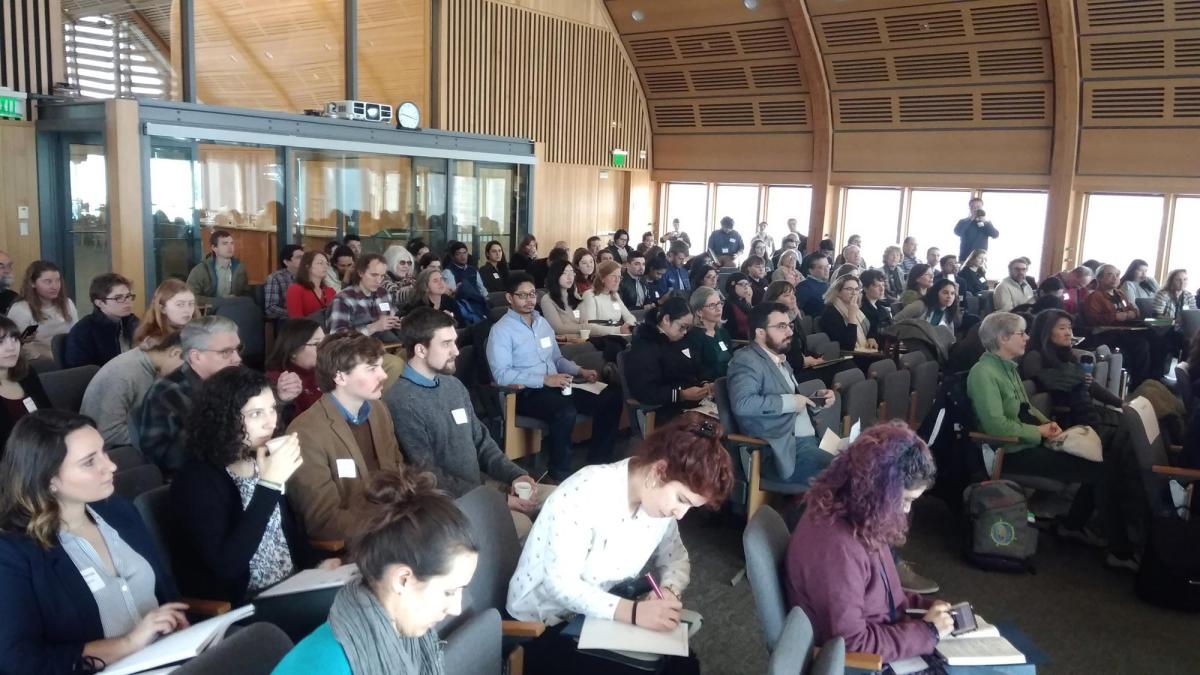
For students currently enrolled in the program, the benefit is clear. Lauren Lynam ’26 is a 2L with a multidisciplinary background in environmental science, economics, technology, and law. She sees the joint degree as a great way to help bolster her acumen at the intersection of business and environmental law.
“I possess the capability to influence business decision-making with respect to the environment, but I have yet to apply my various areas of expertise in harmony. Earning a Master’s in Environmental Management from the Yale School of the Environment will shift my multidisciplinary skills, to an interdisciplinary method in approaching intersected business and environmental issues,” says Lynam.
Having the adaptability to understand a scientific paper, or engage in expansive brainstorming with a business group (without immediately engaging my lawyer-brain to critique proposed ideas), has helped me in innumerable ways throughout my career.”
Brooke Mercaldi ’23, is now an attorney at the Marine Affairs Institute and Rhode Island Sea Grant Legal Program. Having majored in environmental science in as an undergrad, she wanted to expand and strengthen that knowledge–which she did through both immersing herself in coursework and as well as through a broad set of research opportunities.
While completing the Yale portion of the program Mercaldi served as a Research Assistant at the Climate Change and Animal Agriculture Litigation Initiative and for the Yale Center for Environmental Law and Policy, and was also a teaching fellow for two different schools. If that wasn’t enough, she also became involved in an environmental protection clinic at Yale. Mercaldi credits all of these experiences—in addition to the positions she held at Haub—to helping her build the diverse legal and environmental acumen that has enabled her to flourish in her current role.
“The program offered me a unique opportunity to expand my knowledge and skillsets, work with and learn from experts from around the world, participate in additional research opportunities, and network with members of the Yale community—all while enhancing my ability to holistically understand environmental issues and develop creative strategies and solutions ” said Mercaldi. “I was confident Haub Law’s opportunities in and reputation for environmental law and YSE’s environmental science and policy courses would help me achieve my career aspirations.”
Just like many partnerships at Pace, this joint degree program is designed to function in a naturally reciprocal manner. While someone less familiar with Haub may see the immediate benefit to Pace (Yale, after all, is a member of the Ivy League and is consistently ranked among the top schools in the world) this is a partnership that equally advantages Yale. As Galperin explains, the benefits go both ways.
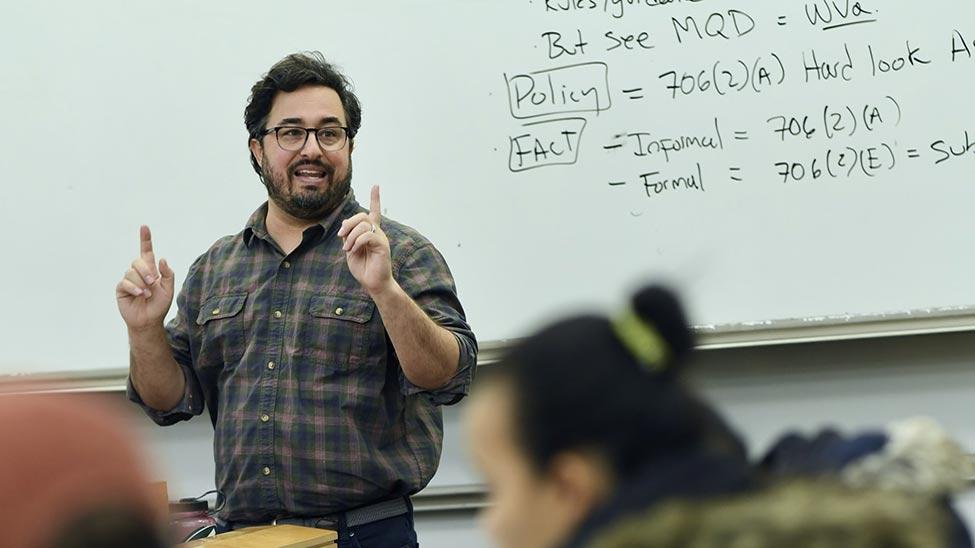
“The relationship between Pace and Yale is not a one-way street,” says Galperin. Obviously it's a great opportunity for our students to connect with a much wider network and a really rich pool of resources and opportunities. But equally as important, Haub is the number one environmental law school in the country. It’s got a huge reputation that attracts students from all over the world with a diverse set of backgrounds and skills. And they arrive at the Yale School of the Environment bringing a really valuable perspective to that; the perspective of lawyers and law students who come from not just any law school, but the number one environmental law program in the galaxy. Yale really values the interdisciplinary nature and quality of thinking that our students bring to the program.”
As record temperatures and natural disasters continues to affect every corner of the globe—2024 was the hottest year on record, with an estimated $229 billion in damages from natural disasters—this partnership ensures that Pace students will continue to be on the forefront of environmental problem solving, particularly as natural climate solutions and carbon reduction solutions grow in importance and popularity. As Galperin emphasizes, students who are both lawyers and understand how certain aspects of the environment truly work—such as the interplay between forests and a surrounding environment—can make a considerable impact in helping to reduce the negative impacts of the climate crisis.
As the partnership continues to grow, Galperin and the faculty at Pace are excited to help guide the next generation of climate lawyers and policy professionals toward continued success as they seek to make a meaningful difference in the world.
“To pair the incredible skill set you learn as a law student—the skills of ‘lawyering’—with an interdisciplinary broad-based approach to environmental problem solving, allows students to have the precision of the lawyering tool with the real-world experience of the master’s degree. And that makes them second to none in terms of environmental lawyers and professionals.”
More from Pace Magazine
At Pace University, learning from the best isn't just a promise—it's a reality. Meet the seven extraordinary professionals-turned-professors shaping the next generation of leaders. From theater to law, nursing to AI, these educators bring world-class experience and passion to every lecture.
The days of John Gotti and The Godfather are long behind us, but organized crime has continued to evolve. A Pace student teams up with two faculty members to investigate.
When generative AI burst onto the scene, Seidenberg faculty were already deep into the work. Learn how the school’s legacy of AI excellence has set the stage for groundbreaking work today and is preparing Pace students for the possibilities of tomorrow.
Winter 2025: 10 Things to Inspire You
Pace University’s Go-Getters are shaping the future with achievements in innovation, global advocacy, and the arts. From top rankings to Broadway stars, discover how our students and alumni inspire confidence, resilience, and real-world impact.
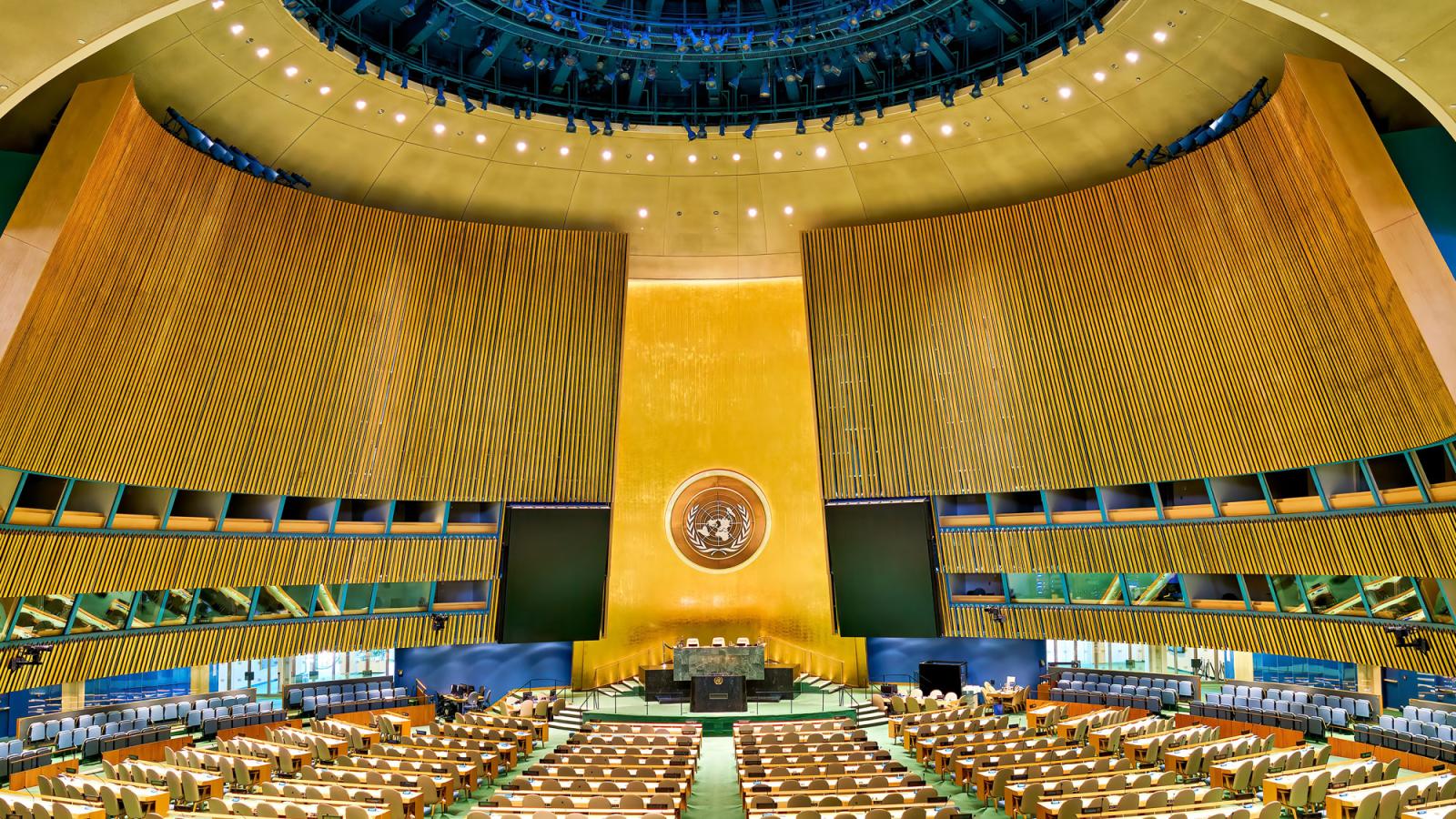
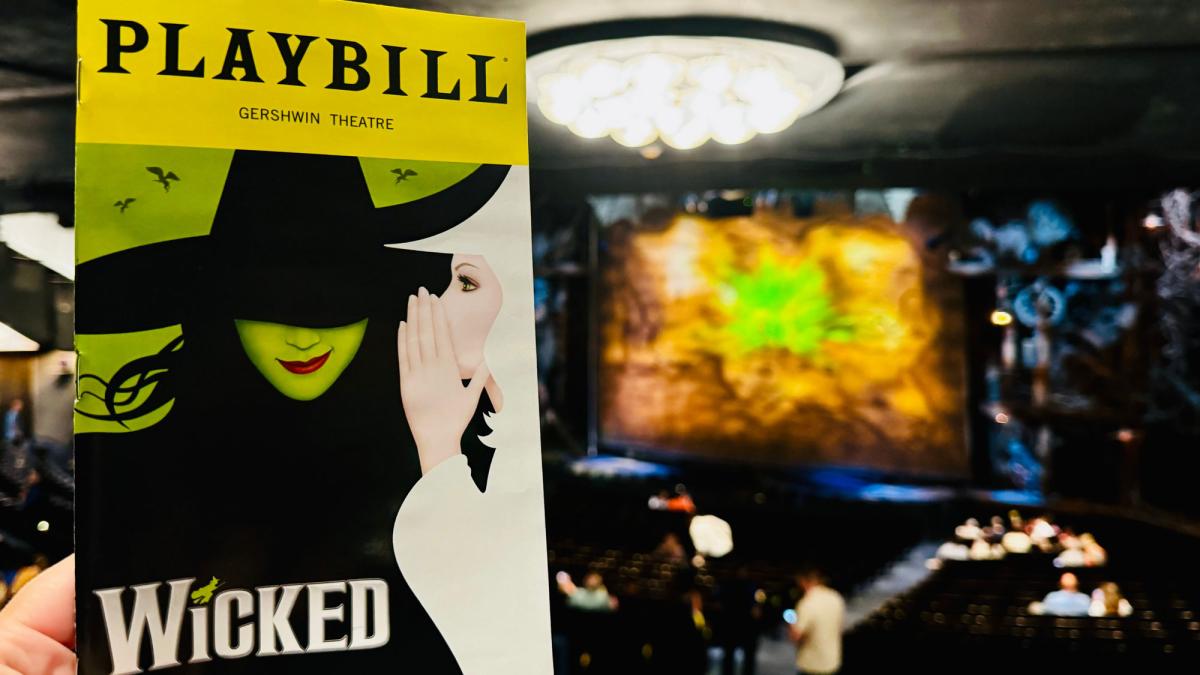
Every semester, Pace University delivers extraordinary stories of ambition, achievement, and impact that exemplify the dynamic spirit of the Pace Community. From game-changing innovations like the “Sewsen” AI project tackling urban flooding to alumni shining on Broadway and Netflix, these highlights showcase the remarkable outcomes of a Pace education. Our students are influencing policy on a global stage, breaking career records at job fairs, and claiming top rankings in academic and professional excellence. Each of these stories, whether from our classrooms, labs, or community initiatives, reflects the confidence, resilience, and drive that define our Go-Getters. Dive into this semester’s top ten and let their journeys inspire yours.
Pace's Rankings Are on the Rise
Pace University is climbing the academic rankings for 2025, and the results are turning heads! Undergraduate programs are surging ahead, with Psychology leaping to the top 26% (up from 66%) and Economics breaking into the top 200. On the graduate side, Nursing–master’s now ranks in the elite top 5% nationwide, Physician Assistant studies lands within the top 100, and Public Administration continues to deliver consistent excellence. These achievements underscore Pace’s commitment to real-world learning and student success.
Pace Gets Jobs! Job and Internship Fair Draws Record Student Turnout
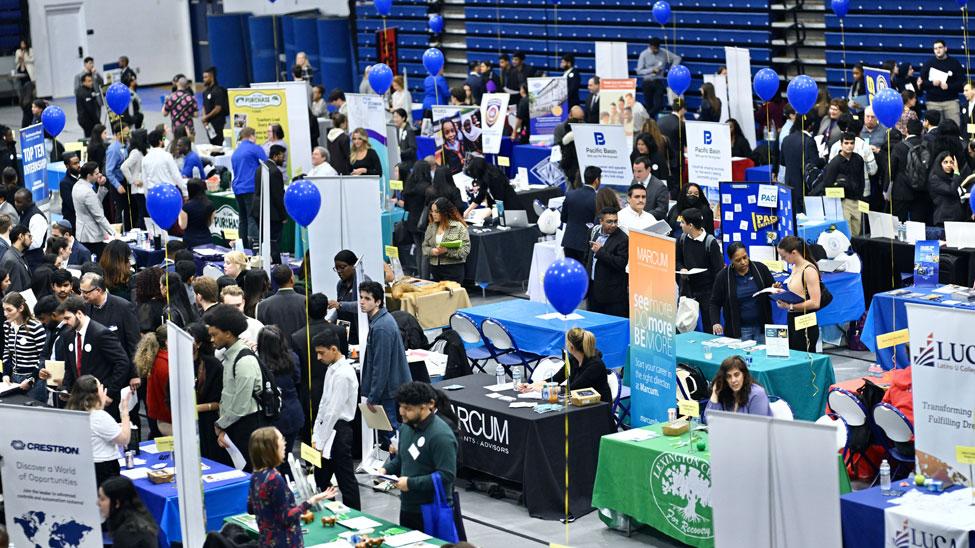
The Fall 2024 Job and Internship Fair at Pace’s Pleasantville Campus broke records with more than 900 students attending. Sponsored by PwC, the fair brought together 120+ top employers, including Deloitte, EY, the FBI, KPMG, Northwell Health, and Memorial Sloan Kettering, offering internships and entry-level roles. Career Services continues to connect Pace students to premier career opportunities across New York City and the Hudson Valley.
Pace Student Advocates at UN for Global Youth Inclusion
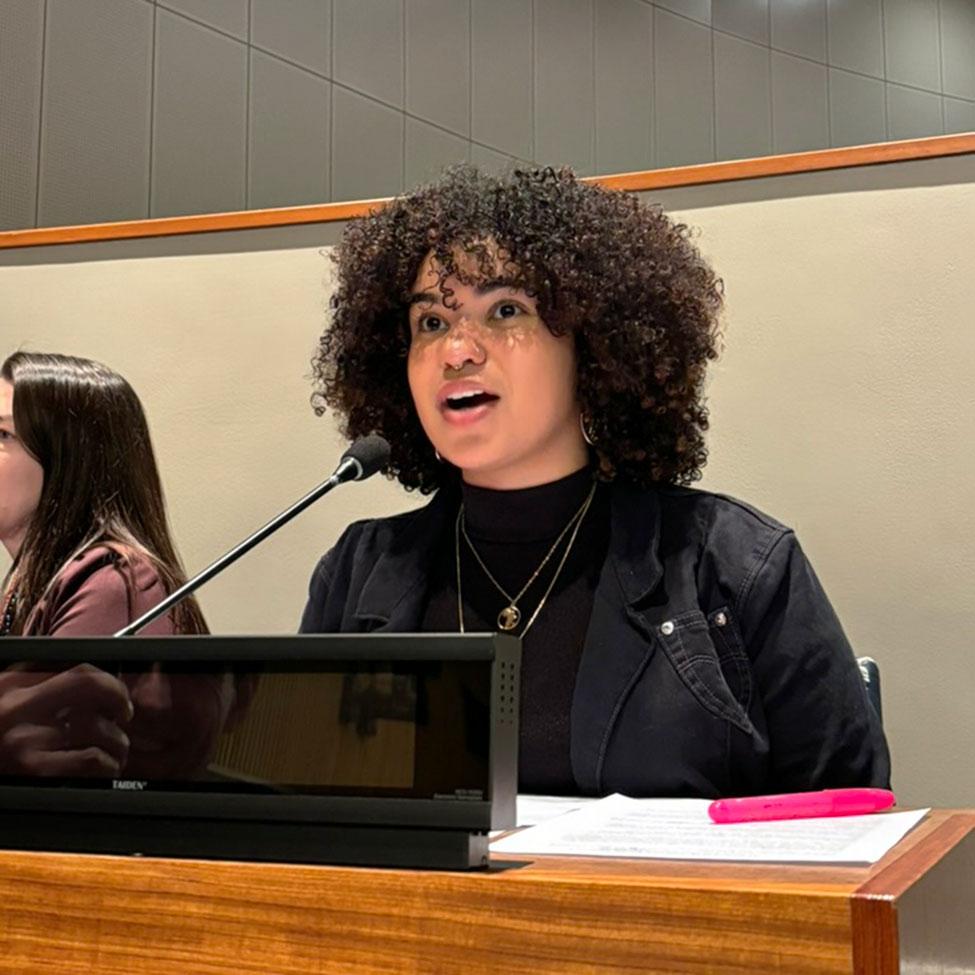
Layne Davis ’25, a Peace and Justice Studies and Political Science major, addressed the UN General Assembly’s First Committee, advocating for youth inclusion in disarmament and security policies. Her statement, supported by more than 100 global organizations, urged leaders to amplify the voices of those affected by armed conflict and intersecting challenges, including climate inaction and marginalization.
A Monster Role: Alumnus Stars in Netflix True-Crime Drama
Alumnus Cooper Koch ’18 took center stage as Erik Menendez in Netflix's highly anticipated series, Monsters: The Lyle and Erik Menendez Story. This drama, based on the true-crime case that captivated the world, showcased Cooper’s powerful performance alongside Javier Bardem and Chloë Sevigny.
Fed Challenge Team Wins Big
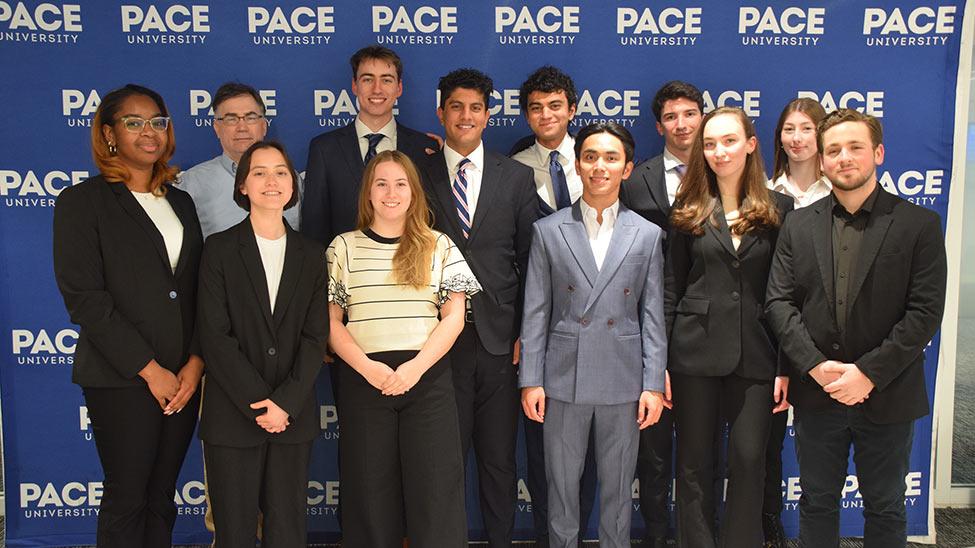
Pace University’s Federal Reserve Challenge Team continues its legacy of excellence, winning the 2024 New York Regional College Federal Reserve Challenge competition and ranking in the top five nationally out of 119 participating institutions— the largest in the competition’s history. The team also received an honorable mention as national finalists, competing against prestigious schools such as Harvard, Princeton, and the University of Michigan.
We’re Ranked in the Top 5 for Broadway Representation
Wicked. Suffs. The Outsiders. Hamilton. Cabaret. How To Dance In Ohio. Pace University clearly knows how to make it to the main stage! Playbill’s Big 10 list highlights the schools with the most Broadway representation from last season, and Pace claimed the number four spot—outranking both Juilliard and Yale.
"Sewsen" Project Shines in AI Innovation Challenge
Third place in the prestigious AI Innovation Challenge went to none other than Pace’s own “Sewsen” project! This groundbreaking sewer sensor + AI solution was celebrated for its standout creativity, technical edge, and commitment to community impact. Designed to empower residents with real-time data on urban flooding, "Sewsen" redefines how we prepare for and respond to city water challenges. Yet another example of how our Pace innovators are setting new standards in tech with real-world impact!
Setting The Pace of FinTech
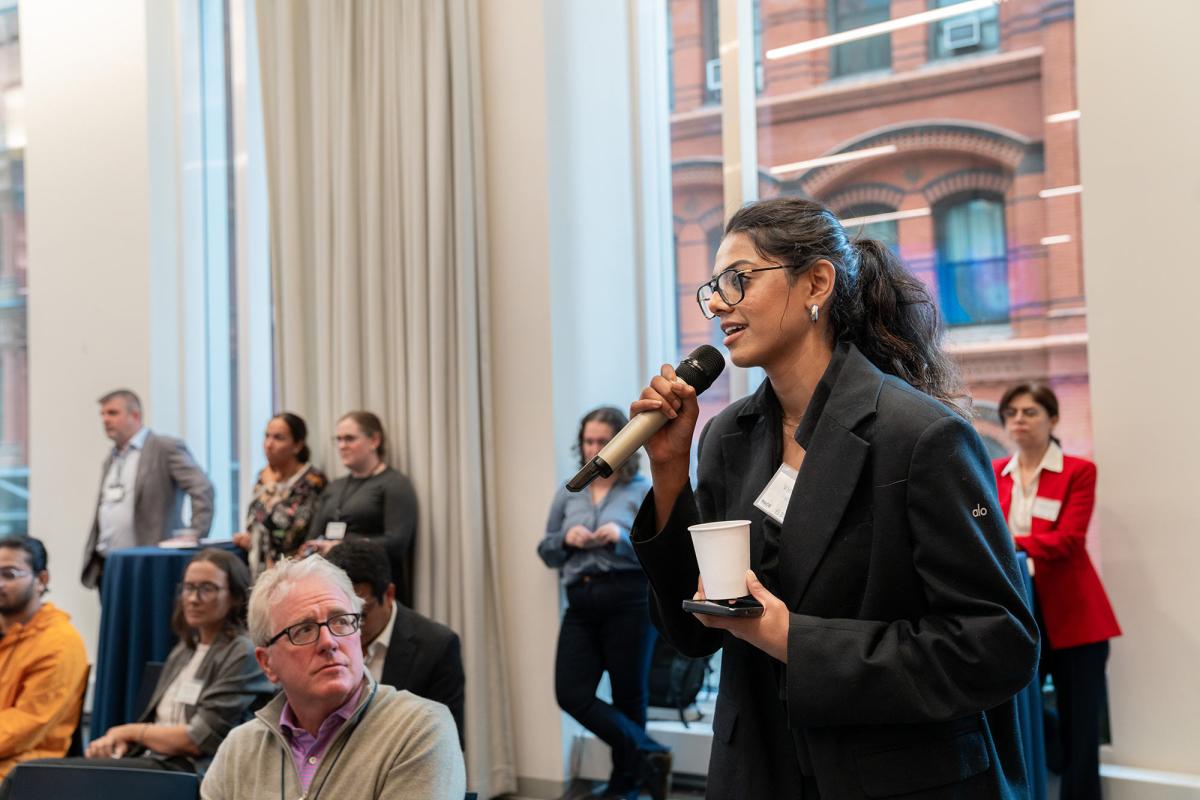
Pace University's Seidenberg School of Computer Science and Information Systems, in collaboration with global investment firms Sixth Street and Goldman Sachs, hosted the inaugural "Pace of Fintech: Accelerating Innovation" conference. The event featured discussions on cutting-edge technologies shaping the future of finance, including automating analog markets, cloud infrastructure, cybersecurity, quantitative finance, and generative AI. Esteemed speakers such as Marco Argenti, Chief Information Officer at Goldman Sachs; R. Martin Chavez, Partner and Vice Chairman at Sixth Street; and Stephanie Cohen, Chief Strategy Officer at Cloudflare, shared their insights. The conference also provided upcoming and recent graduates with career-building advice through an Early Careers Networking workshop led by Sixth Street and Pace Career Services.
Pace Named a Leader in Green Initiatives by The Princeton Review
Pace University has once again made the cut! We’re thrilled to be featured in The Princeton Review Guide to Green Colleges: 2025 Edition, a spotlight reserved for schools that go above and beyond in sustainability. This prestigious honor, drawn from surveys of nearly 600 institutions, recognizes Pace for our top-notch environmental programs, forward-thinking policies, and impactful practices. With more than 25 data points proving our commitment, Pace continues to set the bar for sustainability in higher education.
Pace Students Among 5% Selected for Exclusive UN Fellowship
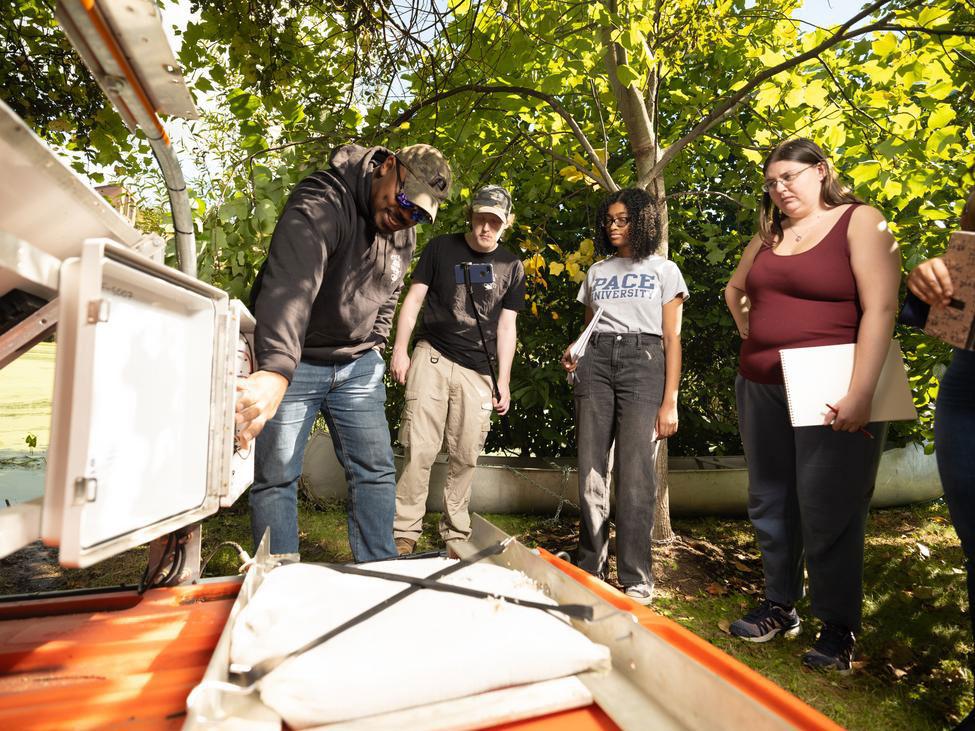
Twenty-five Pace University students were selected for the prestigious UN Academic Impact–Millennium Fellowship, placing them among the top 5% of over 52,000 applicants worldwide. This program empowers Fellows to lead projects advancing UN Sustainable Development Goals, including clean water advocacy, reproductive justice, and refugee rights.
More from Pace Magazine
As mental health becomes a global priority, expanding initiatives like mental health first aid can create lasting change across communities worldwide. Here's how we’re making it happen right here at Pace.
Through a grant from the New York State Department of Education, SOE's Jennifer Pankowski and Seidenberg's Tom Schmidt are employing artificial intelligence solutions to potentially revolutionize the teacher training experience.
At Pace, innovation and impact go hand in hand. This past fall, our faculty and staff secured transformative awards and impressive grants that spotlight Pace’s leadership in environmental justice, experiential learning, cybersecurity, and student well-being.
Winter 2025: Leadership Letter
At Pace University, we're driven by renewal, growth, and the pursuit of excellence. As we step into this exciting chapter, we reflect on the incredible progress we've made as a community of leaders, changemakers, and innovators.
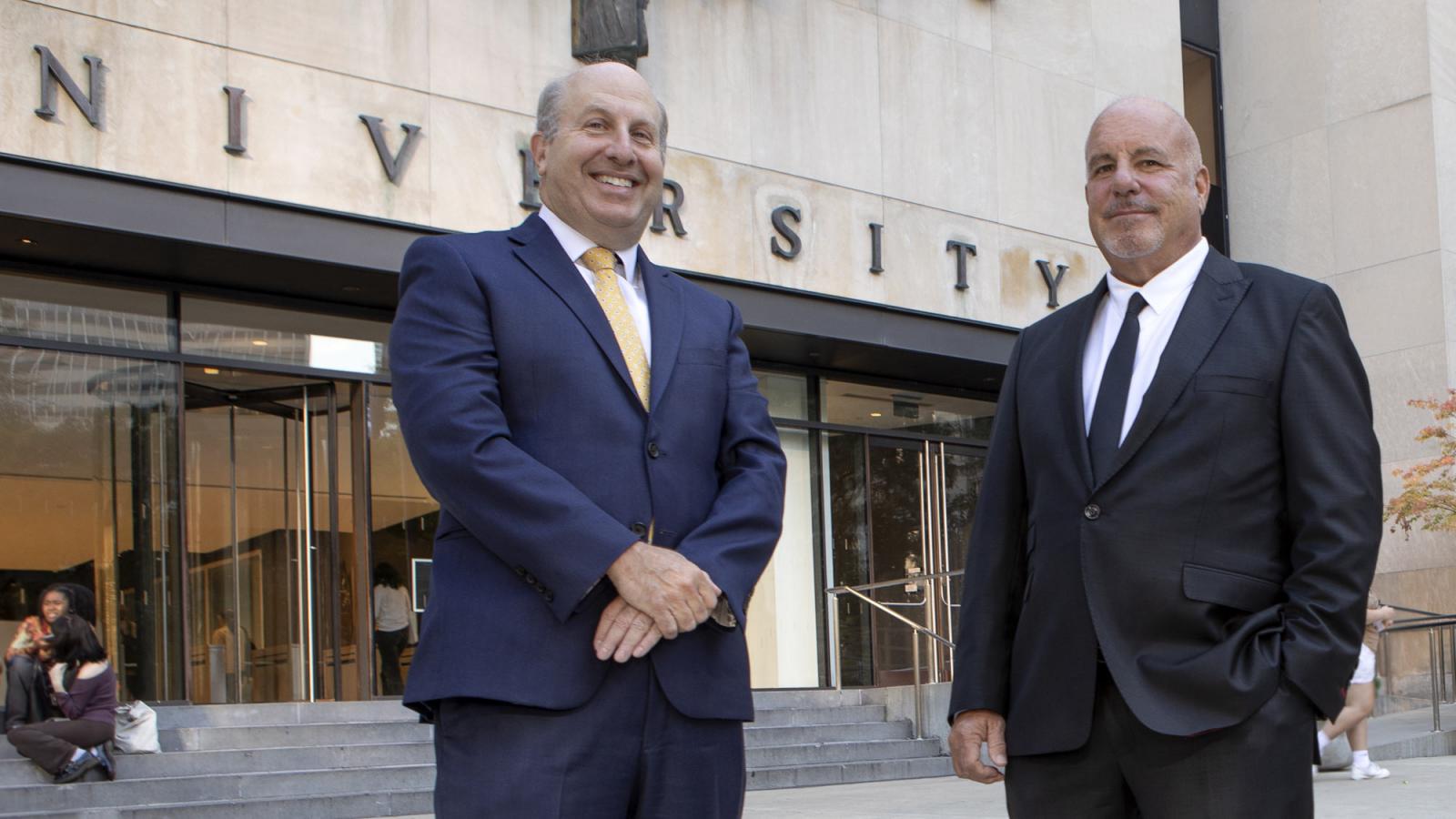
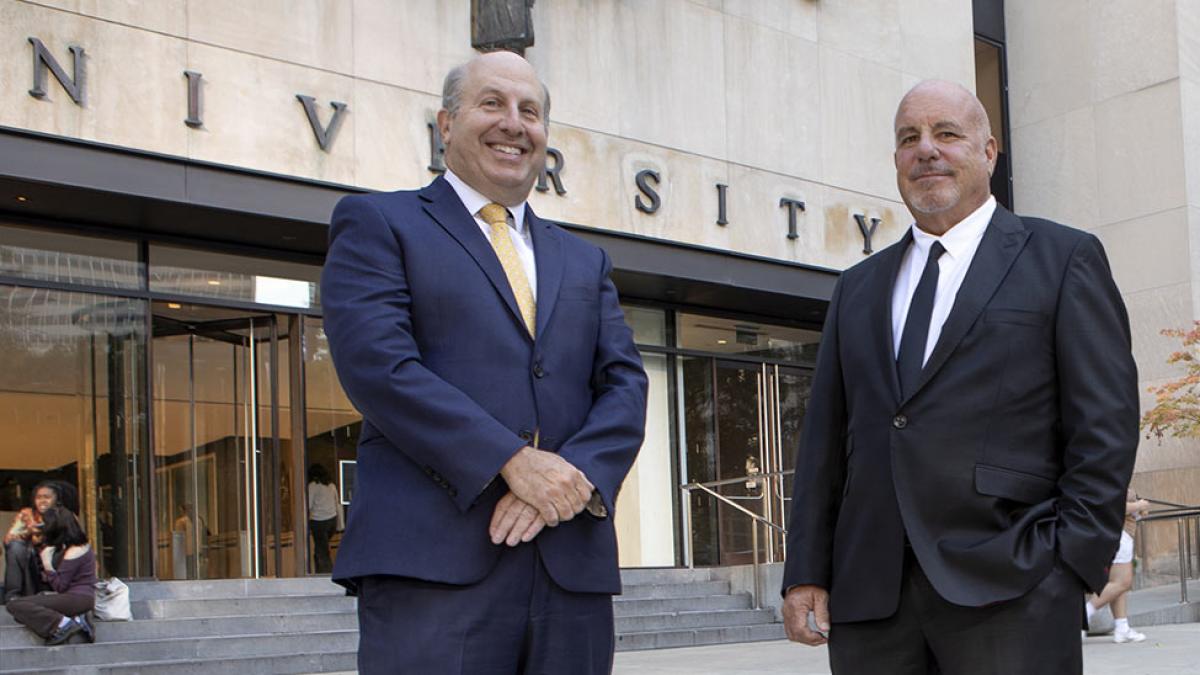
As a new semester begins, we are excited by the opportunities ahead and the momentum that continues to drive the Pace Community forward. This is a time of renewal and growth, underscored by our commitment to quality and excellence as we advance Pace University’s mission. Together, we are strengthening our programs, broadening opportunities, and ensuring Pace’s place as a leader in education and innovation.
This time also offers an opportunity to reflect on the progress we’ve made and the path that lies ahead. Whether it’s excelling in your careers, contributing to groundbreaking research, or fostering meaningful connections in your communities, our alumni continue to exemplify the drive and determination that define Pace. We are inspired by the extraordinary ways you bring the values of this University to life.
As we look forward to the remainder of the academic year, we are reminded of the collective achievements and resilience of our community. Our students are leaders and changemakers, our faculty bring new ideas and expertise to the forefront, and our alumni continue to excel across every industry and field. Together, we are demonstrating what it truly means to be a Pace Setter.
We are thrilled to share the Winter 2025 edition of Pace Magazine, which showcases the many ways our University is advancing and thriving. This issue highlights the groundbreaking work of our students and faculty, exciting new initiatives like the expansion of our environmental partnership with Yale, and the stories of alumni making strides in their fields. We hope you will take pride in exploring the incredible achievements featured in these pages and join us in celebrating all the great things happening within the Pace Community.
Thank you for your continued dedication, support, and pride in Pace University. Together, we are building a future to be proud of.
Warm regards,
Marvin Krislov
President
Rob Sands, JD ’84
Chair, Board of Trustees
More from Pace Magazine
At Pace University, learning from the best isn't just a promise—it's a reality. Meet the seven extraordinary professionals-turned-professors shaping the next generation of leaders. From theater to law, nursing to AI, these educators bring world-class experience and passion to every lecture.
For nearly 25 years, Pace University's Elisabeth Haub School of Law has partnered with Yale University to create one of the most unique and impactful joint degree programs in the world.
When generative AI burst onto the scene, Seidenberg faculty were already deep into the work. Learn how the school’s legacy of AI excellence has set the stage for groundbreaking work today and is preparing Pace students for the possibilities of tomorrow.
